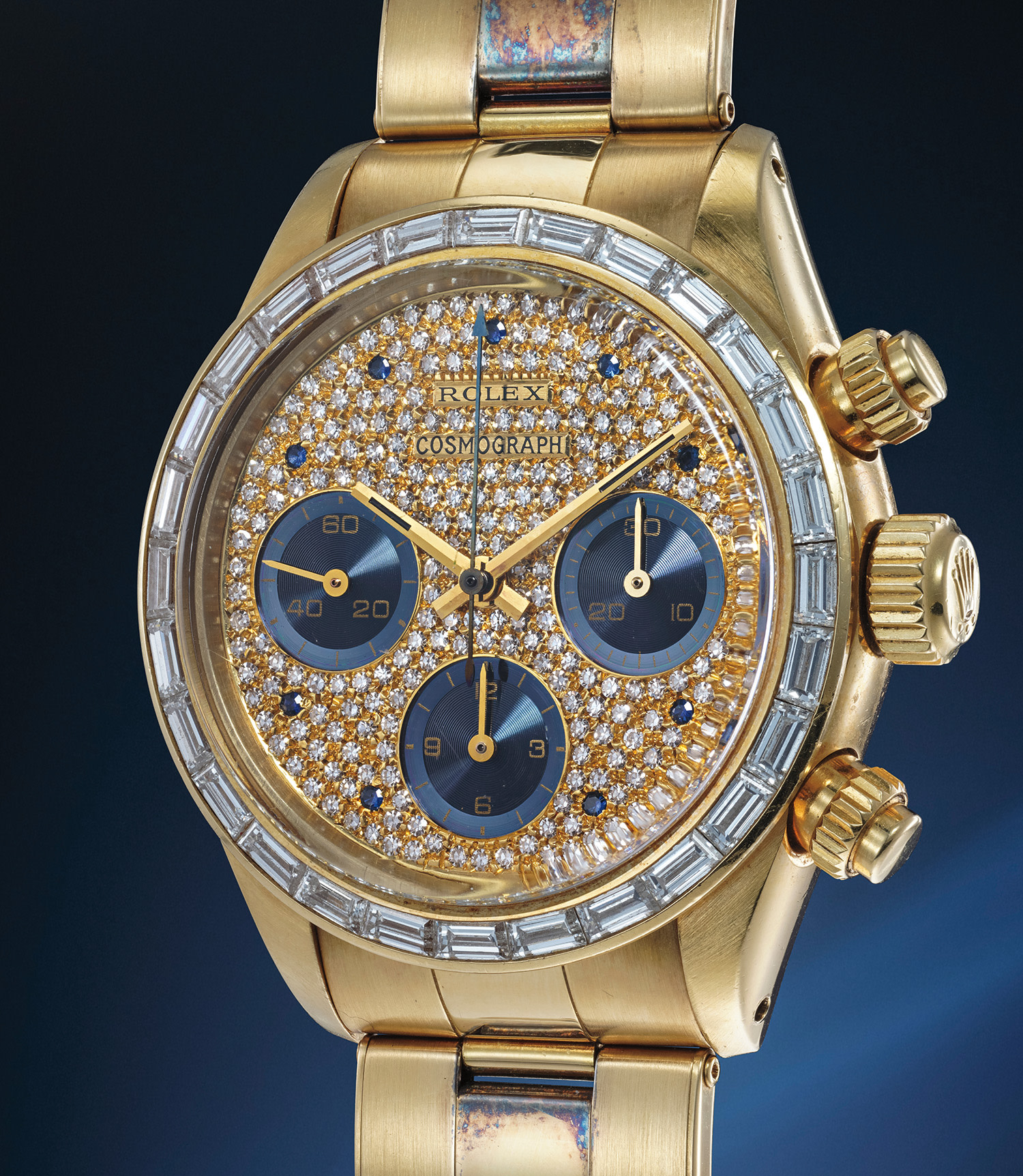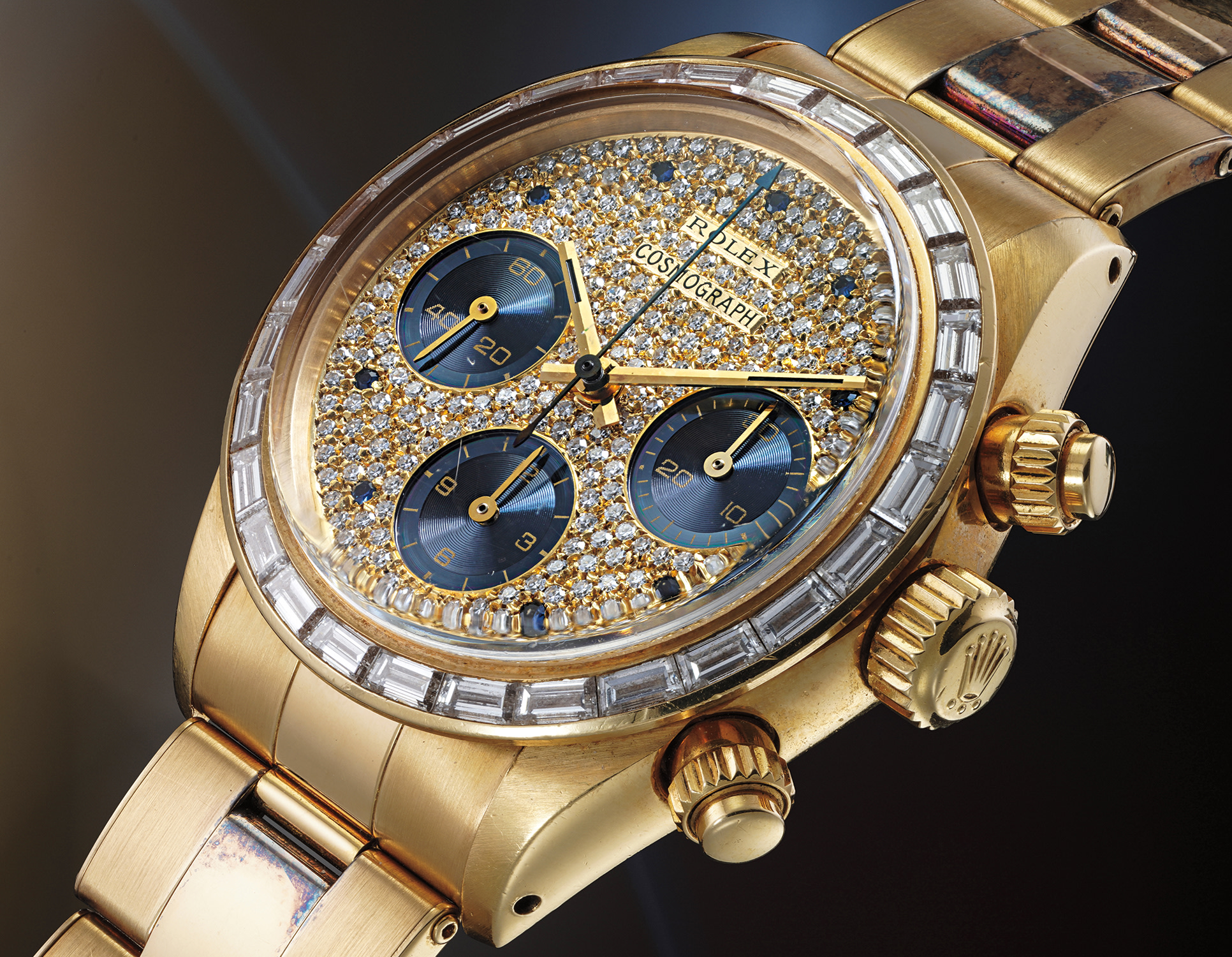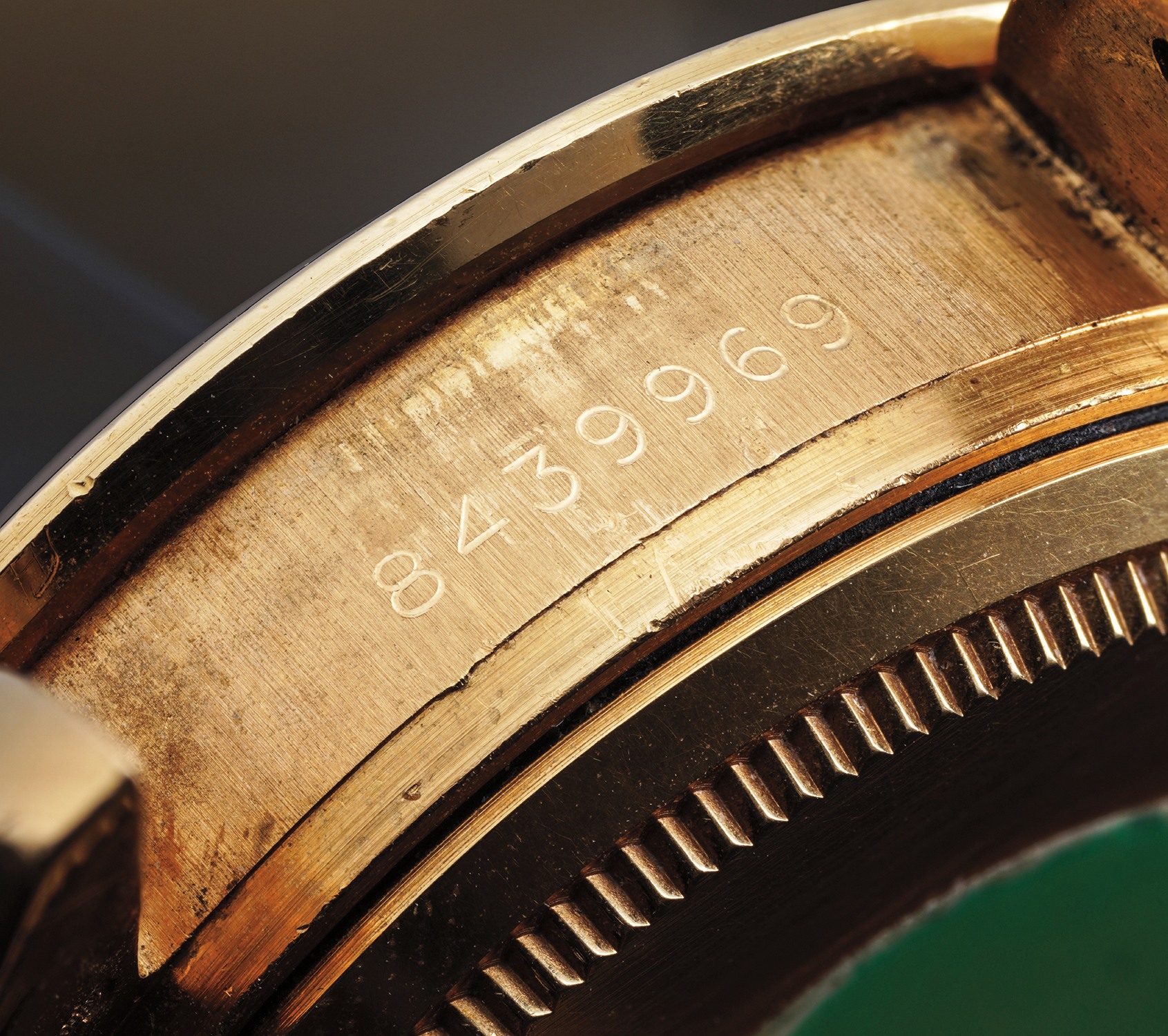













102
Rolex
Ref. 6270
Cosmograph Daytona
A breathtakingly stunning, incredibly rare and very important yellow gold chronograph wristwatch with diamond-pavé dial, sapphire indexes, baguette diamond-set bezel, caseback sticker and bracelet
Full-Cataloguing
In fact, until the explosion of creativity of the 1960s/70s, the public would regard timepieces mostly as tools with a practical usage (from simple time telling, to more advanced professional complications) or as evening/dress pieces, usually in gold and hardly ever with gemstones - with the rare concession to the diamond-set indexes. Truly bejewelled timepieces were virtually exclusively made for women in very small sizes. It was beyond outlandish to imagine a bejewelled sports watch at the time. And yet, in the 1980s, that is exactly what Rolex made, predating by a couple of decades what is today a mainstream trend.
In fact, such a brave decision would probably not have been made by the company, if they had not been spurred by one of their most important - if not their most important ever - clients: His Highness Sultan Qaboos bin Said Al Said of Oman (1940-2020). It is under his specific request that the first two bejewelled Rolex sport references came to light. One, reference 6269, is distinguished by its brilliant-cut diamond bezel, diamond pavé dial and golden subsidiary counters. Produced in less than thirty pieces, it is a dream for collectors. And yet, the present reference 6270 surpasses even its sibling reference 6269, both in terms of rarity and arguably of looks as well.
With only eight pieces known by the market - including the present one - the reference is without a doubt one of the most rare standard production (if such a term can even be applied, in this instance) Rolex references - and the rarest Daytona one. Intriguingly, this example appears to be part of the very first batch made, as the three earliest case numbers known for this reference are the consecutive 8’439’967, 8’439’968, and 8’439’969 (the present watch). The other known examples bear serial 9’091’4xx (2 examples); 9’827’95x (2 examples) and a lone 8’761’106 specimen. While this distribution suggests the existence of unknown pieces, scholars agree in estimating the production at overall enormously limited numbers, most likely between 10 and 20 specimens in total.
On the aesthetic side, its design is as striking and luxurious as its production is restricted. The bezel is still diamond-set like reference 6269 but the stones are baguette-cut, the ultimate tier in terms of stone quality and appearance. Furthermore, the subsidiary counters are a never before (or again) seen cobalt hue, subtly shifting according to how the light impacts them. The final result is absolutely breathtaking.
Compounding to its historical interest, overall rarity, collectability, and mind boggling looks, the present example is furthermore one of the best preserved to ever appear in a salesroom. The oxidation layer present on the case hints at very little usage, and the presence of the original green sticker to the back further substantiates this assumption, making this piece one of the most collectible and important Rolex timepieces to be available to the collecting community.
Rolex
Swiss | 1905Founded in 1905 England by Hans Wilsdorf and Alfred Davis as Wilsdorf & Davis, it soon became known as the Rolex Watch Company in 1915, moving its headquarters to Geneva in 1919. Like no other company, the success of the wristwatch can be attributed to many of Rolex's innovations that made them one of the most respected and well-known of all luxury brands. These innovations include their famous "Oyster" case — the world's first water resistant and dustproof watch case, invented in 1926 — and their "Perpetual" — the first reliable self-winding movement for wristwatches launched in 1933. They would form the foundation for Rolex's Datejust and Day-Date, respectively introduced in 1945 and 1956, but also importantly for their sports watches, such as the Explorer, Submariner and GMT-Master launched in the mid-1950s.
One of its most famous models is the Cosmograph Daytona. Launched in 1963, these chronographs are without any doubt amongst the most iconic and coveted of all collectible wristwatches. Other key collectible models include their most complicated vintage watches, including references 8171 and 6062 with triple calendar and moon phase, "Jean Claude Killy" triple date chronograph models and the Submariner, including early "big-crown" models and military-issued variants.